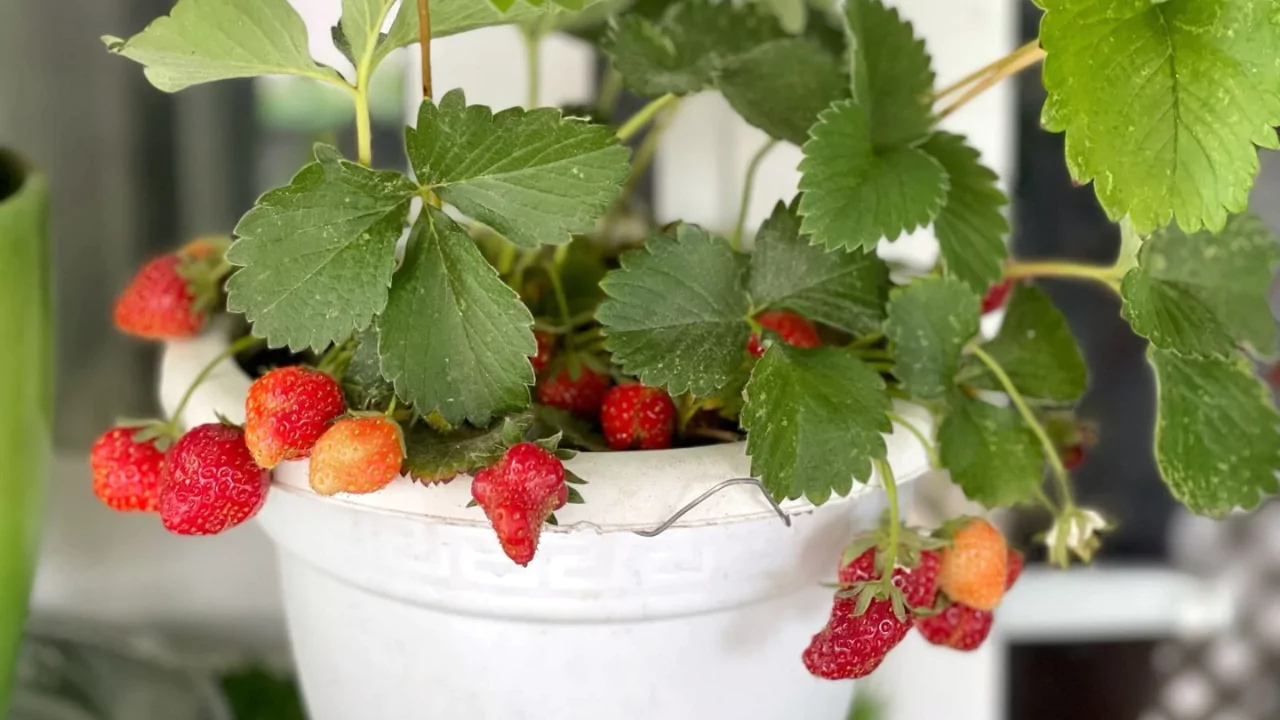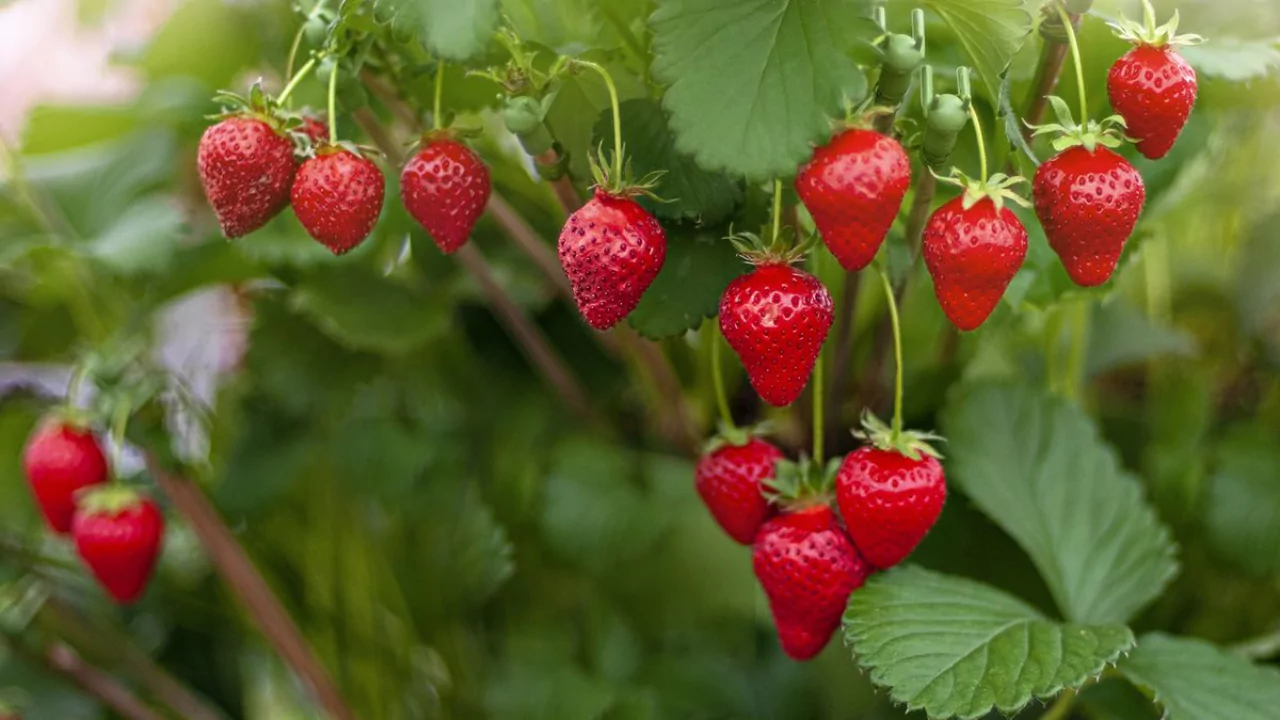
Strawberries are one of the easier fruits to cultivate and grow well in containers. Winterizing your potted strawberry plants ensures that they will thrive year after year.
The pots used to grow strawberry plants are typically terra cotta, the reddish-orange pots most people are familiar with. Both standard terra cotta pots and those designed specifically for strawberries or small succulents will work just fine.
The reason for using terra cotta is that it is highly porous, providing excellent drainage. Strawberry pots can be found in local home and garden centers or online retailers such as Amazon. Another option for a container gardener is a wire hanging basket lined with coconut fiber or moss.
Strawberries are perennial plants which means they undergo a dormant period in winter and emerge in early spring, ready for their next growing season. With some minimum preparations to protect them from the cold, potted strawberry plants can be quite productive, matching the yields of in-ground plants. The extent of winterizing differs depending on your planting zone.

Almost every planting zone supports the cultivation of strawberry plants for a few months during the year. If you need help identifying what zone you live in, check out PlantMaps.com. People in zones 2-7 experience prolonged winters and will need to winterize their potted strawberries. For those in zone 8 or higher, congratulations, no extra care is needed
Strawberry pots can be winterized by storing them in a cool garage or cellar. You can also opt to remove the plants from the pots and place them in plastic pots. To ensure the best results, sink these pots into your garden beds up to their rims while leaving the tops of the plants exposed. This is, of course, dependent on doing so before the soil freezes. After that, the exposed plant tops should be covered with a loose layer of clean straw.
For regions with milder winters that do not sustain prolonged sub-zero temperatures, providing shelter against winter winds, snow and ice accumulation can be achieved by placing the plants under the deck or on a covered porch. During colder than freezing temperature periods, moving the plants to the garage or cellar can prevent freezing damage.
In the warmest areas where commercial berry production occurs, minimal care such as selectively pruning excess runners and reducing watering is adequate for encouraging growth of the mother bush.
That’s all there is to winterizing your potted strawberry plants. To speak briefly, homegrown strawberries do serve as a great container crop due to the fact that they:
1. Have shallow roots
2. Are low-maintenance plants
3. Produce small fruits that don’t require a lot of room
4. Display vine characteristics which enable expansion beyond the container.
5. Propagate easily through runners suitable for rapid rooting in additional pots.
The most suitable pot cultivators are ever-bearing (spring and late summer bearing) strawberries. Some well-known ever-bearing varieties include Calypso, Alpine, Arapahoe and Alexandria.
While buying plants, ensure to check for healthy green plants with sparse runners, and whose root crowns should feel firm yet fleshy. Local home and garden centers are good places to purchase plants.
Fellow gardeners who have surplus plants to share also qualify as good sources. Trustworthy seed and plant catalogs include: Henry Fields, Gurney, Jung, Burpee, Park Seeds and Harris Seeds. They provide plants with limited guarantees which makes them excellent sources.
Cultivating strawberry plants in containers is a pleasurable, cost-effective, healthful, and simple method to familiarize you or your children with gardening and nutritious dietary habits.